Environmental Response Work and Baton Rouge Flood of 2016
The Baton Rouge Flood of 2016, now called by some as “The Great Flood of 2016” certainly left a mess. Mold problems as a result are a hot topic – and rightly so. But there are plenty of other environmental problems awaiting homeowners, business owners, schools, and everyone else.
Baton Rouge Flood recovery is going to take some time – response work, particularly environmental work, must balance speediness and caution.

this isn’t a speedy cleanup
It’s been a very interesting summer around Baton Rouge, made much more so as a result of the Baton Rouge Flood of 2016. For all of you working to recover at home, work, or both, take heart. Keep pushing forward. From what I see all over, while heartbreaking, I’m greatly encouraged by the hard work I see. I’m also inspired by how I see people helping others – many times complete strangers.
There are a lot of mold problems out there, and many of them existed before the Baton Rouge Flood. Sometimes it’s difficult to tell new mold and moisture problems from years (or decades!) old problems.
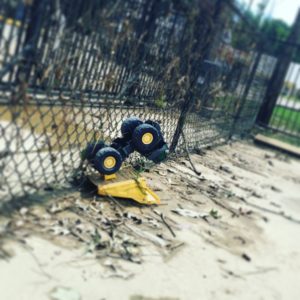
another disaster – more recovery
I think we’re also going to see more mold problems that seem to appear overnight. That’s not entirely true – the mold was there, maybe for quite a while, waiting for the right opportunity. The right opportunity can take the form of floodwater, roof leaks, or extended power outages where a building’s mechanical system allow the right environment for the mold to take off.
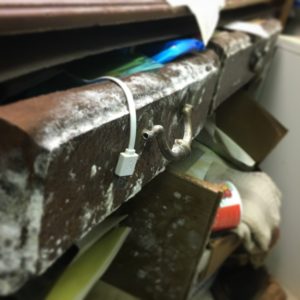
So as you clean up, keep a close watch on your buildings – you may see mold come back where you thought it was cleaned up. Or you may see “new” mold. Either way, make sure to get the areas dry and cleaned up. No one likes mold remediation, and it’s certainly less fun the 2nd, 3rd, 4th time around. Skip that if you can.
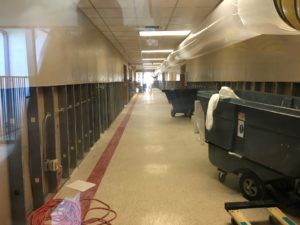
get dry as soon as possible
Here’s something to check out:
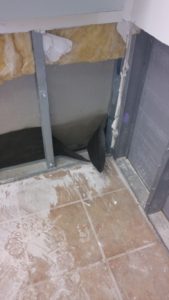
we see this a good bit
Here’s the same picture, but marked up to show some key observations:

what’s the risk?
The problem here is there’s no easy way to remediate all the mold that’s there, or to correct the flashing. Most owners will remediate what they can reach, do the putback work, and hope for the best. But the moisture problem this detail causes will likely lead to recurring mold growth.
It boils down to the owner’s risk tolerance – some owners elect to remediate all the materials and correct the flashing – from the outside. That’s not quick, easy, or cheap.
Baton Rouge Flood recovery is going to bring about a lot of renovation and demolition work that will disturb asbestos and lead. Don’t get so focused on mold that you ignore other hazards.
Asbestos and lead are more commonplace than you may think. If you knew how many buildings out there (including homes!) contain asbestos and lead, you may be surprised.
Protect yourself, and others – the good news with asbestos and lead is if you don’t breathe or swallow asbestos or lead, you won’t have a problem. Keep your eye on the ball, though.
Many contractors think to check for asbestos and lead before beginning demolition. Others, however, don’t. Contractors may put (or try to anyway) the burden on you or the building owner to notify them of hazardous materials and conditions.
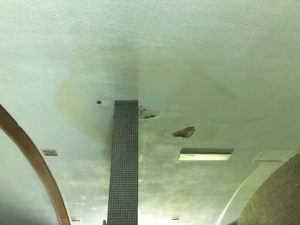
water damage + asbestos = problem
Giving the contractor a comprehensive scope of work is a great idea. While developing the scope takes time, everyone should have a clear understanding of what’s expected – of everyone. And with everything going on, many times emotion clouds people’s recollection of conversations – I saw that firsthand this week, and it wasn’t pretty.
Keep in mind the so-called “other” safety hazards. Protect your hands, eyes, head, and even your ears. Slips, trips, and falls remain the number one cause of job site injuries and deaths. Your recovery work is a project.
Also don’t forget to protect yourself against hazards that may be present in the cleaning chemicals you (or your contractors) will use.
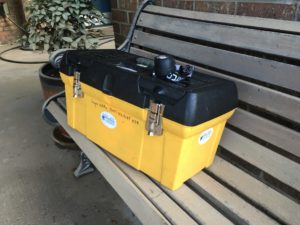
time to go to work
How are you handling your recovery work from the Baton Rouge Flood? We have free documents that will help you in recovery work. The documents include:
U.S. EPA Potential Environmental Health Hazards When Returning to Homes and Businesses
The Hartford Steam Boiler Inspection and Insurance Company Flood Recovery Recommendations
LSU Ag Center Mold Control Tips
Wynn L. White Consulting Engineers, Inc. Tips for Building Non-Water Sensitive Wall
If you’re interested in checking out these documents, email me.
If you need professional help measuring moisture content or mold sampling, email me.
Stay safe, my friends.